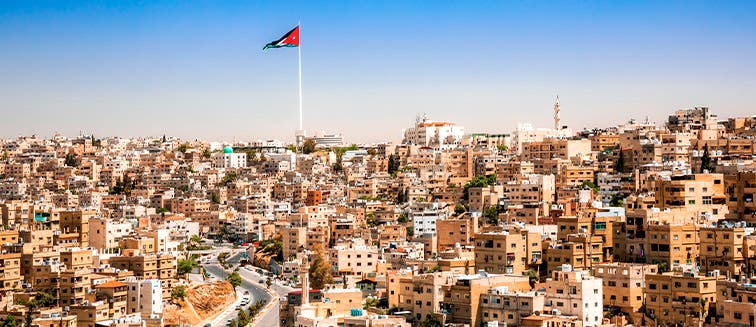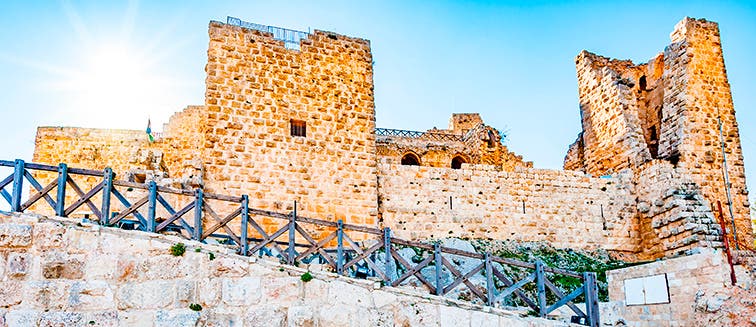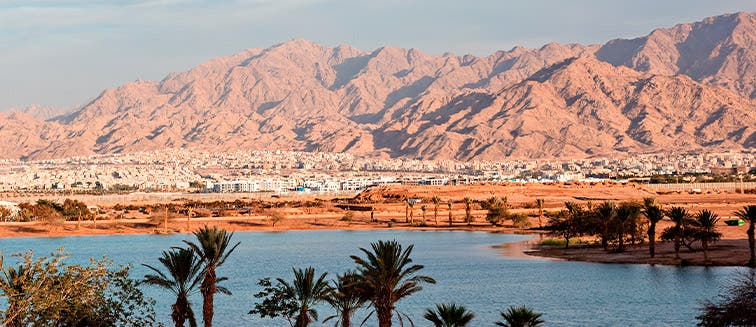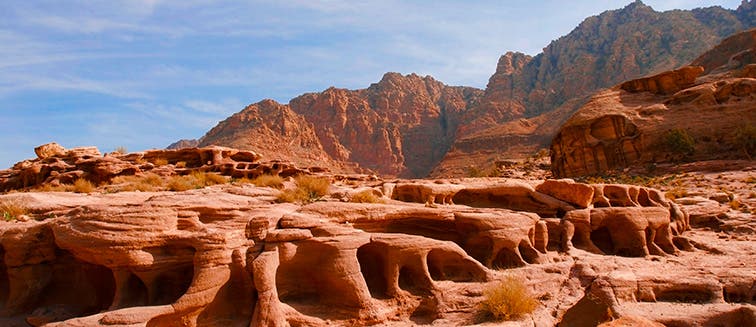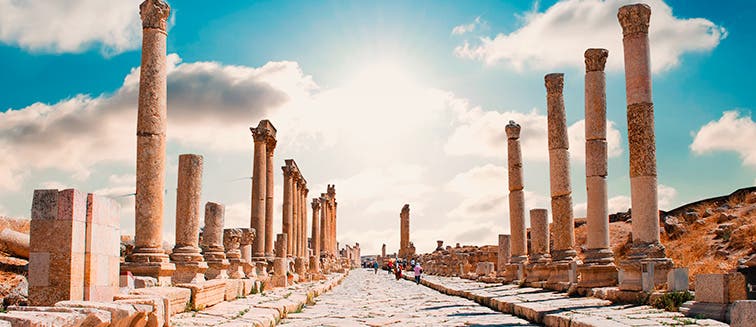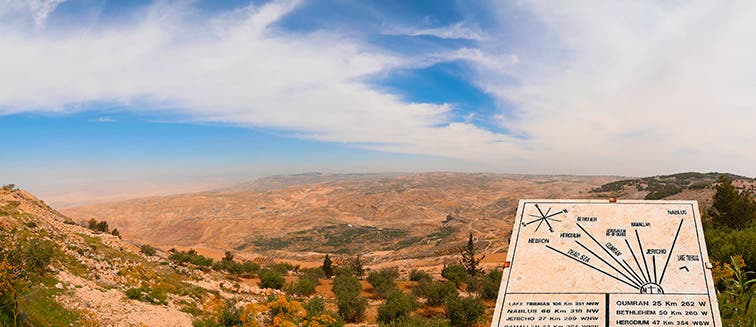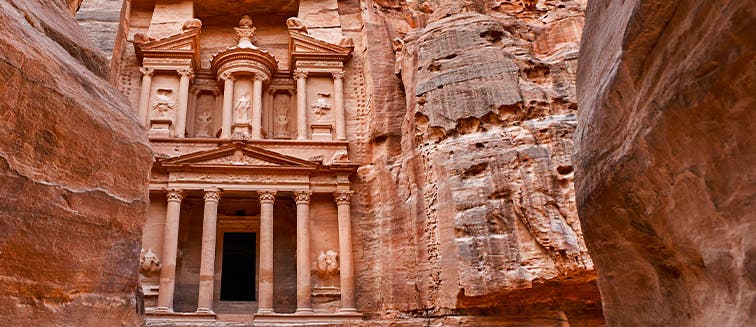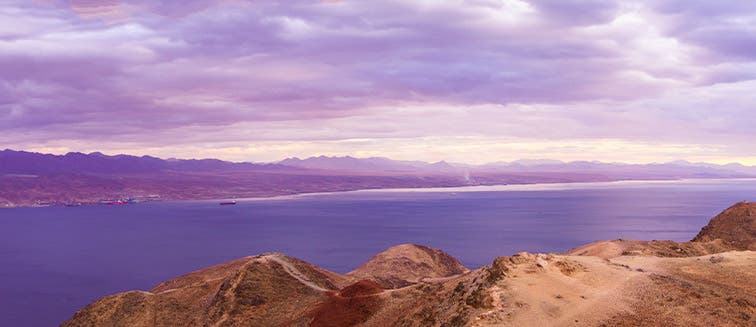Africa
Americas
Asia
Europe
Oceania
Holidays to Europe (103 available)
Albania(2)
Austria(11)
Baltic States(3)
Belgium(2)
Croatia(6)
Cyprus(1)
Czech Republic(8)
Denmark(2)
England(10)
Finland(2)
France(14)
Germany(11)
Greece(11)
Holland(2)
Hungary(9)
Iceland(6)
Ireland(7)
Italy(20)
Montenegro(1)
Northern Ireland(2)
Norway(7)
Portugal(14)
Scotland(4)
Slovakia(4)
Spain(13)
Sweden(1)
Switzerland(4)
Advisors hotline: +1 778-743-2337
Monday - Friday 9am - 9pm EST
Saturday - Sunday: 9 am - 6 pm EST
What to see in Jordan
Amman
Tourist attractions Amman
Spread across seven hills, the capital of Jordan is a fascinating fusion of ‘east meets west’ and a melting pot of cultures. One of the world’s most modernized Arab cities, the only sure thing to cease the honking of car horns of Amman’s busy streets is the melodic, five-times-daily call to prayer. The western part of the city, where most who travel to Amman choose to stay, is where you’ll find artisan boutiques, busy street vendors selling mouth-watering falafel wraps and trendy hookah cafes.
On the other hand, the eastern part of Amman is largely residential whilst downtown Amman is home to Roman ruins and relics of the old city, in the shadow of the majestic Citadel. Exploring Amman on foot involves a lot of stair climbing as you wind your route between the different neighborhoods, wadis, and jabals, the words used for the city’s valleys and hills. Although many who travel to Amman see the city as a starting point for further travel into Jordan and to the icons of Petra or Wadi Rum, ignoring the sights of Amman would mean missing out on the chance to experience the culture of a modern Arab city in a friendly, safe and vibrant setting.
Once a sleepy village, Amman became the capital of Trans-Jordan in the 1920s and has steadily expanded in size and population ever since. You cannot mention a trip to Amman without acknowledging the fact that it’s a foodie paradise. From hearty Jordanian breakfasts of hummus and falafel to refreshing seasonal fresh fruit juices and syrupy khafen pastries, eating your way around the city’s street food vendors and bakeries is a highlight of a tour of Amman. The arts scene in Amman is equally as eclectic with a mix of traditional and contemporary galleries, museums and fabulous street art for visitors to discover.
What to see in Amman
The beauty of a holiday to Amman is that many of the city’s sights are situated in the same neighborhood so you can enjoy sightseeing at a comfortable pace. There are just enough things to see in Amman to keep you busy, but not too much to be overwhelming, making it a perfect destination for a city break. A good place to get a feel for Amman is on Rainbow Street, which winds it’s way up the hillside of Jebel Amman. This popular street, wide enough to accommodate pedestrians, unlike many of the city’s narrow alleys and lanes, is the perfect place to while away an afternoon or evening, exploring trendy boutiques and cafe-hopping to sample the best brews in Amman.
Owing to the city’s long history, you’ll find a number of historic sites to explore on a trip to Amman, the most famous of which is the Roman Theatre. Dating back to the 2nd-century, it was built when Amman was known as Philadelphia and, in its heyday, would have held up to 6,000 spectators. As well as fabulous sunset views from the top tiers of the theatres, if you visit during the summer months you can watch one of the open-air concerts that take place in the theatre on long, balmy evenings.
Overlooking the Roman Theatre is the Amman Citadel, situated on the highest part of the city. A collection of archaeological sites from as far back as the Bronze Age, the Amman Citadel reveals the secrets of a number of ancient civilizations. The Temple of Hercules is a stand-out attraction, the ruins of which consist of two giant columns, erected during the reign of Marcus Aurelius. Amman Citadel also has a small on-site museum where you can learn more about the archaeological excavations, but the most impressive ruins are those of the Umayyad Palace, an 8th-century palace complex. Its Islamic architecture and beautiful domed audience hall are well-worth seeing. From the Citadel visitors can enjoy sweeping views across downtown Amman, including the Roman Theatre, prompting your imagination to run wild as you envisage the Amman of antiquity.
One of the icons of the city’s skyline is the King Abdullah Mosque, a must-see if you travel to Amman. Built-in the 1980s, it’s domed roof provides a vibrant pop of color amongst the sand-colored buildings of the rest of Amman. The bright blue and turquoise patterned dome crowns a huge mosque, with a capacity of over 7,000 worshippers. Uniquely, it is the only mosque in Amman that is open to non-Muslim visitors, but of course, visitors must respect the dress code if they visit King Abdullah Mosque. It’s particularly photogenic after dark when the minarets are illuminated.
Finally, if you’re eager to experience authentic Ammani life and hospitality, be sure to explore the neighborhood of Al-Balad in downtown Amman. Here, you can get lost in the aromas of the busy souks, stop for coffee and pastries at a local cafe or haggle with merchants to bag a bargain price on goods ranging from quality gold to textiles, spices, and herbs. Visiting Al-Balad is a fun and exciting way to experience real Amman.
OUR BEST TRIPS TO AMMAN
YOU ALSO LIKE
Armenia
Notify me when available
Bahrein
Notify me when available
Israel
Notify me when available
Jordan
8 Trips
Kazakhstan
Notify me when available
Kyrgyzstan
Notify me when available
Lebanon
Notify me when available
Oman
1 Trips
Qatar
Notify me when available
Uzbekistan
1 Trips
Cambodia
4 Trips
Thailand
11 Trips
Vietnam
8 Trips
Myanmar
Notify me when available
Indonesia
7 Trips
Malaysia
2 Trips
Philippines
5 Trips
Singapore
3 Trips
Laos
Notify me when available
India
15 Trips
Bhutan
2 Trips
Turkey
7 Trips
Nepal
5 Trips
Sri Lanka
6 Trips
Maldives
7 Trips
United Arab Emirates
5 Trips
Saudi Arabia
1 Trips
China
5 Trips
Japan
10 Trips
Hong Kong
6 Trips
South Korea
5 Trips
Tibet
Notify me when available
Mongolia
Notify me when available
Taiwan
Notify me when available
Tourist attractions jordan
Points of interests
- Trips to Ajloun Castle
- Trips to Amman
- Trips to Aqaba
- Trips to Dana Nature Reserve
- Trips to Dead Sea
- Trips to Jerash
- Trips to Little Petra
- Trips to Mount Nebo
- Trips to Petra
- Trips to Red Sea
- Trips to Wadi Rum
Other Points of interests
- Trips to Almaty
- Trips to Ashdod
- Trips to Beirut
- Trips to Beit She'an
- Trips to Bishkek
- Trips to Bukhara
- Trips to Caesarea
- Trips to Dead Sea
- Trips to Galilee
- Trips to Garni
- Trips to Haifa
- Trips to Isfahan
- Trips to Jericho
- Trips to Jerusalem
- Trips to Karakol
- Trips to Khiva
- Trips to Khor-Virap
- Trips to Lake Sevan
- Trips to Muscat
- Trips to Nizwa
- Trips to Noravank
- Trips to Nur-Sultan
- Trips to Pasargada
- Trips to Persepolis
- Trips to Ras al Hadd
- Trips to Safed
- Trips to Samarkand
- Trips to Shiraz
- Trips to Tashkent
- Trips to Tehran
- Trips to Tel Aviv
- Trips to Temple Mount
- Trips to Vagharshapat
- Trips to Wahiba Sands
- Trips to Yadz
- Trips to Yerevan
Countries Nearby
- Armenia Trips
- Bahrein Trips
- Bhutan Trips
- Cambodia Trips
- China Trips
- Hong Kong Trips
- India Trips
- Indonesia Trips
- Israel Trips
- Japan Trips
- Jordan Trips
- Kazakhstan Trips
- Kyrgyzstan Trips
- Laos Trips
- Lebanon Trips
- Malaysia Trips
- Maldives Trips
- Mongolia Trips
- Myanmar Trips
- Nepal Trips
- Oman Trips
- Philippines Trips
- Qatar Trips
- Saudi Arabia Trips
- Singapore Trips
- South Korea Trips
- Sri Lanka Trips
- Taiwan Trips
- Thailand Trips
- Tibet Trips
- Turkey Trips
- United Arab Emirates Trips
- Uzbekistan Trips
- Vietnam Trips
Trip Styles
